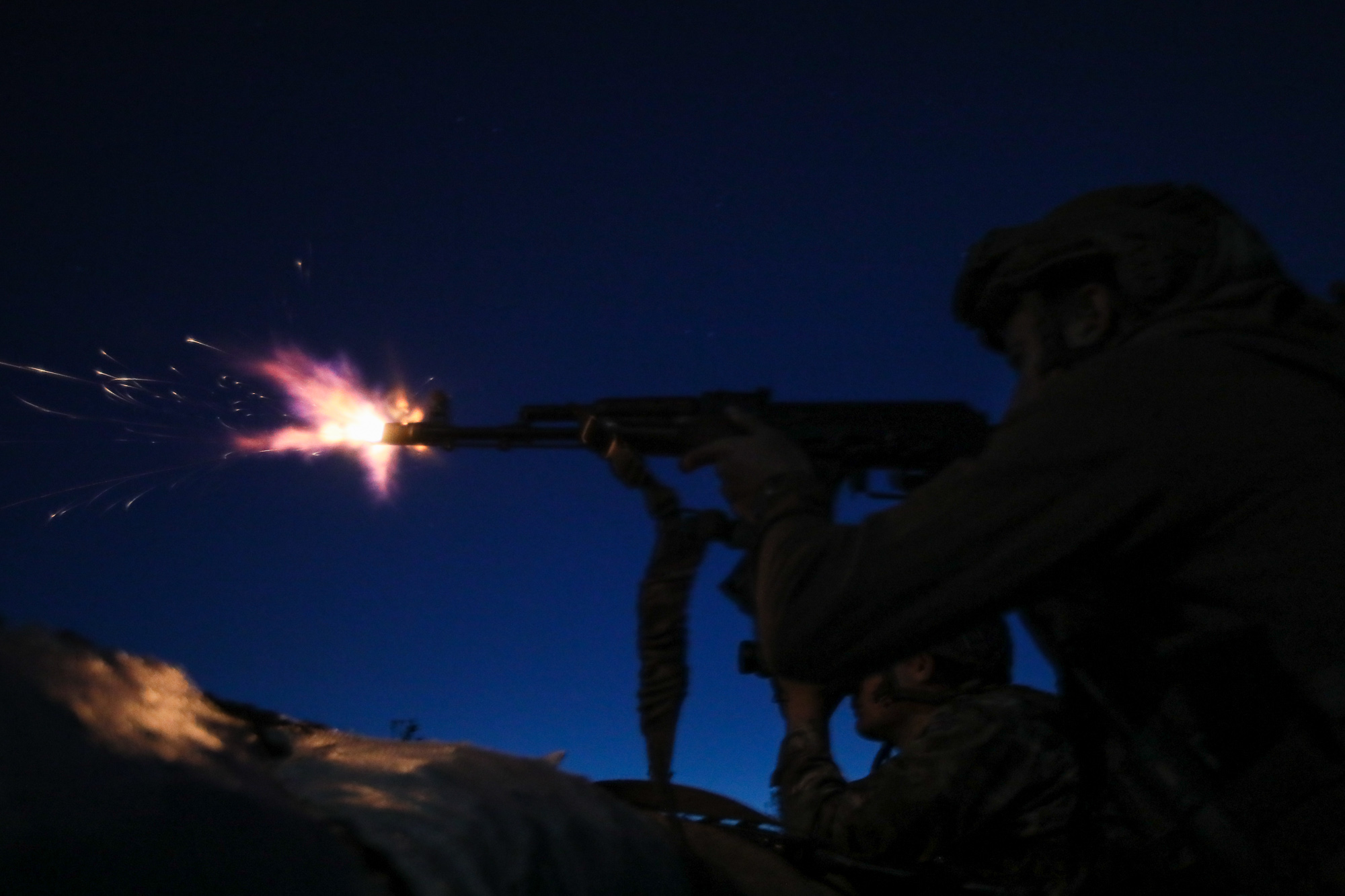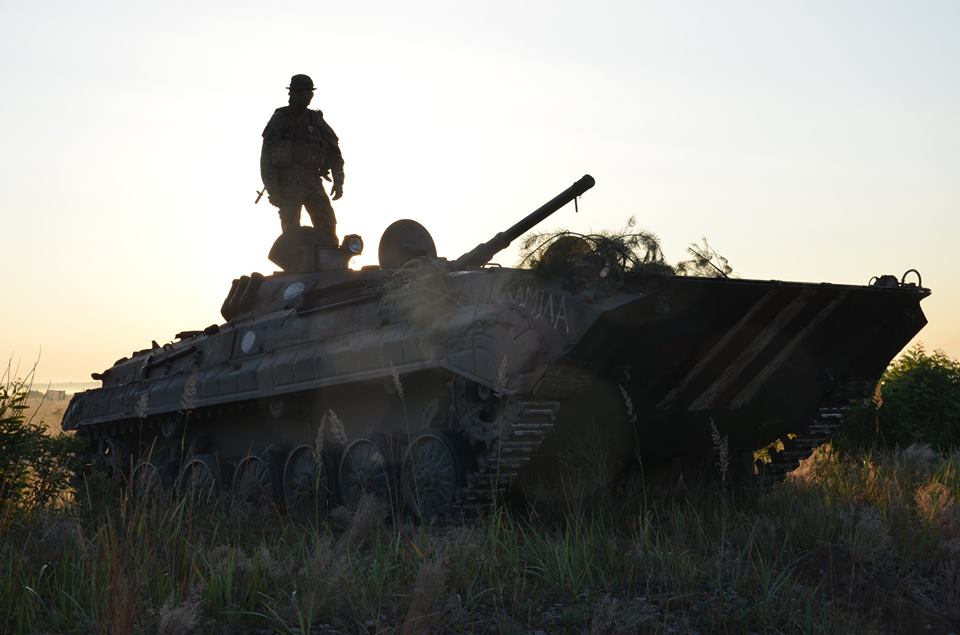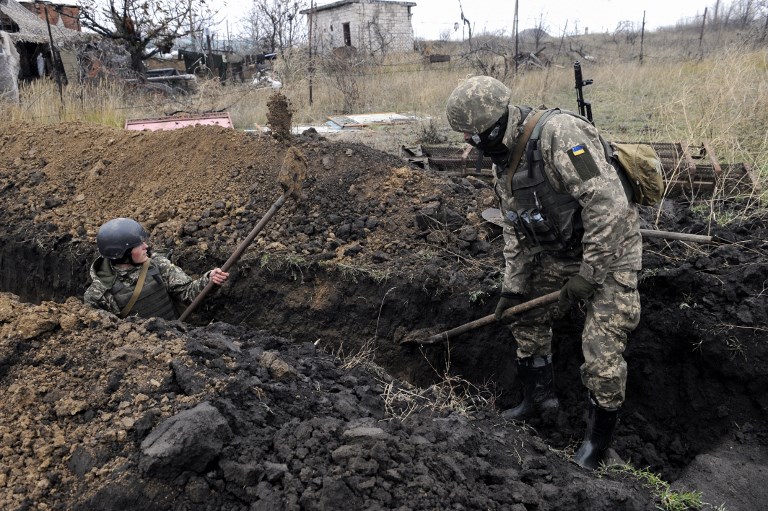KRAMATORSK, Ukraine — Nearly a month after the third successful round of mutual pullback of manpower and weapons on the front line of Russia’s war, Ukraine is still boiling with anger and confusion over this controversial move.
Numerous critics, on the streets and in social media, decry the Donbas disengagement as President Volodymyr Zelensky’s surrender of Ukrainian territory and yet another step towards capitulation to the Kremlin.
But the top commander of Joint Forces, Ukraine’s 40,000-strong military-police contingent deployed to the war front, rejects these apocalyptic prophecies as having very few in common with reality on the ground.
Lieutenant General Volodymyr Kravchenko told the Kyiv Post in an exclusive interview on Dec. 1 that the standing isn’t going anywhere — and will never give up defending Donbas.
Contrary to the inflammatory manipulations, recent progress in disengagement has reduced military and civilian casualties in the war zone, without doing harm to the Ukrainian army’s battlefield abilities, the general said.
Besides, this process is only the first step towards what Ukraine seeks from the Kremlin in this war: The full disbandment of militant forces and reinstatement of Ukrainian control of its southeastern border, prerequisites to local elections and a further peace settlement under the Minsk accords.
But even in the case of Russia’s failure to carry out its part of the deal, the Ukrainian forces will be ready to uphold a demilitarized “civilian safety zone” all along the 420-kilometer frontline and continue deterring the enemy as long and firm as necessary, as the commander stated.

A Ukrainian soldier engages the enemy during a combat clash with Russian-backed militants near the town of Novoluhanske, eastern Ukraine, overnight into June 15, 2019. (Volodymyr Petrov)
A bullet away
Plans to try and separate the opposing forces at three special experimental points — Stanytsya Luhanska, Zolote, and Petrivske — were agreed on in Minsk negotiations as far back as in 2016.
But they were never fully implemented until Zelensky came to power with an agenda of negotiating a breakthrough in the stalled static war that has already claimed more than 13,000 lives since 2014.
In July, October, and November 2019, all three successful rounds of disengagement between the Ukrainian military and Russian-backed militants were finally completed.
Under the agreement, both of the warring parties were supposed to implement a simultaneous, step-by-step, mirror-wise withdrawal by nearly 1 kilometer back, thus creating wider demilitarized zones between the lines.
Despite the public uproar and street protests strongly backed by Zelensky rivals, mostly former President Petro Poroshenko, none of the three rounds of disengagement resulted in Russian-backed forces advancing to occupy old Ukrainian lines or gaining any more territories.
The respective withdrawal of Russian-backed forces in the designated areas was also confirmed and recorded by Special Monitoring Mission of Organization for Security and Cooperation in Europe.
The process paved the way for long-overdue repairs of vital civilian infrastructure, like the damaged pedestrian bridge at the entry point of Stanytsya Luhanska, or extensive minesweeping works.
While the pullback will not end the grueling, slow-paced warfare in Donbas, it will cut down on the firefights that take place when combatant armies are too close together.
“There’s a war going on here, whether someone likes it or not,” General Kravchenko said. “Both we and our enemy have to improve our tactical positions.”
In many of the front-line locations, the combating forces stand within 30 meters of each other, or a hand grenade throw away. Separating the warring troops with a considerably wider no-contact zone was, in fact, the only way to halt the local-scale clashes, given the fact that neither Ukrainian forces nor Russian-backed militants are expected to adhere to major offensive operations.
“We’re getting separated with distances at which mutual visual contact is not possible anymore, particularly in terms of engaging (the enemy) with firearms. And when both sides pull one more kilometer back, they end up standing beyond the effective range of firing weapons. This psychological factor of aggravation (vanishes). We can’t (directly) see the enemy, the enemy can’t see us. And such a situation is favorable towards de-escalating tensions.”
The Ukrainian military said the goal is ensuring better security for thousands of civilians living dangerously close to hostile targets. But the de-escalation is also expected to help reduce military casualties.
According to Kravchenko, ever since all three mutual pullout operations were successfully completed, none of the agreed spots of disengagement have seen serious armed clashes or combat-related fatalities.

A Ukrainian soldier gets on top of a infantry fighting vehicle during drills at the Honcharivskiy firing range on July 1, 2016. (Ministry of Defense of Ukraine )
Twisted perception
The public in Ukraine often gets politicized misinformation about what happens in the Donbas.
Ukrainian social networks are rife with rumors spread in the web and saying that the Ukrainian military command, upon Zelensky’s order, reportedly bans Ukrainian troops from returning fire to Russian-backed militants.
According to Kravchenko, the present rules of engagement — open fire when fired upon — have never been altered under his command.
“If there is a threat to lives and health of our servicepersons, or there is a threat of (the enemy) territorial seizure — our soldiers and officers are fully entitled to and have to return fire,” he said.
“We relocate only to positions that are advantageous to us.”
Moreover, the scale of these pullout operations is often exaggerated.
In reality, the disengagement operation in Petrivske envisaged moving only 42 troops beyond the two-kilometer demilitarized zone, while only 56 Ukrainian troops were pulled back in Stanytsya Luhanska while nearly 50 stepped back in Zolote, according to Kravchenko.
This hardly qualifies as capitulation claimed by street protesters. If the enemy fails to honor its obligations in disengagement, all Ukrainian high-alert combat units would be able to step in quickly, Kravchenko said. “If there is a threat of violations and the enemy moves forward, our forces will move ahead, too, and take on their old positions. We will react correspondingly. The military is not ceding territories and never did that. The price we have paid for what we have now was too high, and we will never surrender our territory. That is nothing but politics and speculation.”

Ukrainian soldiers dig a trench on the front line with Russia-backed separatists in the small city of Shyrokyne, 25 km from Azov Sea port of Mariupol, on Nov. 28, 2018. (AFP)
Safety zone
But, as Kravchenko repeatedly noted, the disengagement of troops and weapons in Donbas is only the first stage of that is expected to precipitate Ukraine’s regaining control of its border with Russia. Only in this eventuality can elections be held in currently Russian-occupied Donbas.
So far, mutual withdrawal has been successfully implemented in only three areas. But, according to Kravchenko, negotiations to continue this process at a number of new points are continuing.
He confirmed that the Ukrainian side considers the option of creating a separation zone along with the whole duration of the 420-kilometer front line. In general, the demilitarized area can include nearly 30 localities, including a number of key hotspots like Shyrokyne east of Mariupol and Pisky near the ruined Donetsk Airport.
“If there is a political agreement to (create a full-fledged demilitarized zone), it is not going to pose a threat,” he said. “There will be no territorial loses.”
Similar to Zolote and its surroundings, Ukrainian police would be ensuring law and security in the demilitarized zone.
He noted that the constant presence of a third, non-aligned party, would be still necessary, so the question of extending the mandate of OSCE mission in Donbas must be raised during the upcoming Normandy Four meeting of Ukrainian, Russian, French, and German leaders in Paris on Dec. 9.
“OSCE has to be present at the separation line around the clock,” Kravchenko said. “And to execute control and guarantee that none of the (warring parties) moves forward. In an ideal situation, there must be a security zone (constantly monitored by enhanced OSCE patrols) all along the contact line. This is what we aspire to and it all depends on political decisions.”
